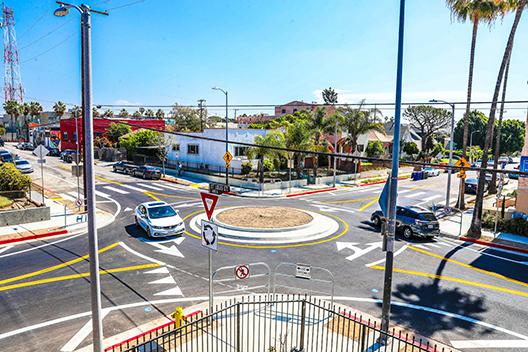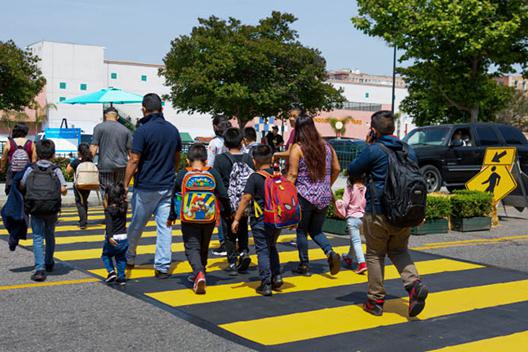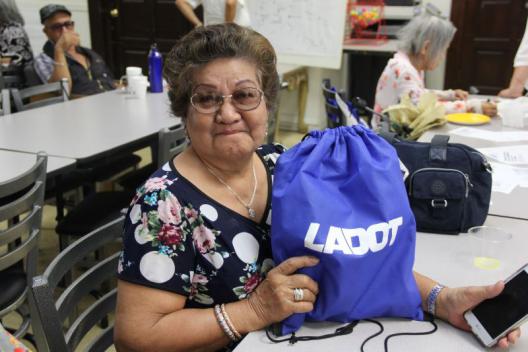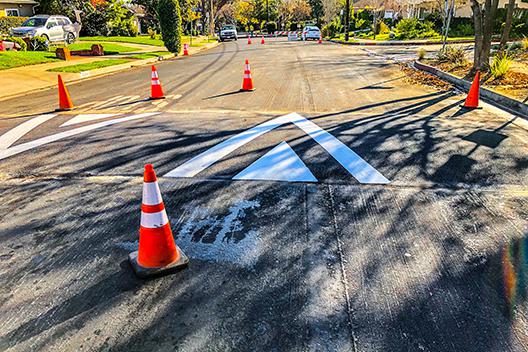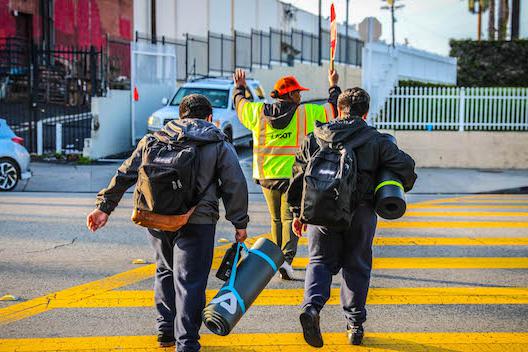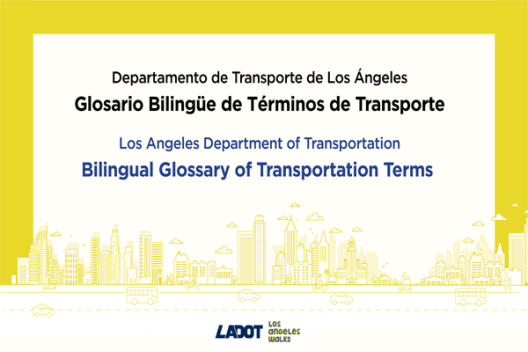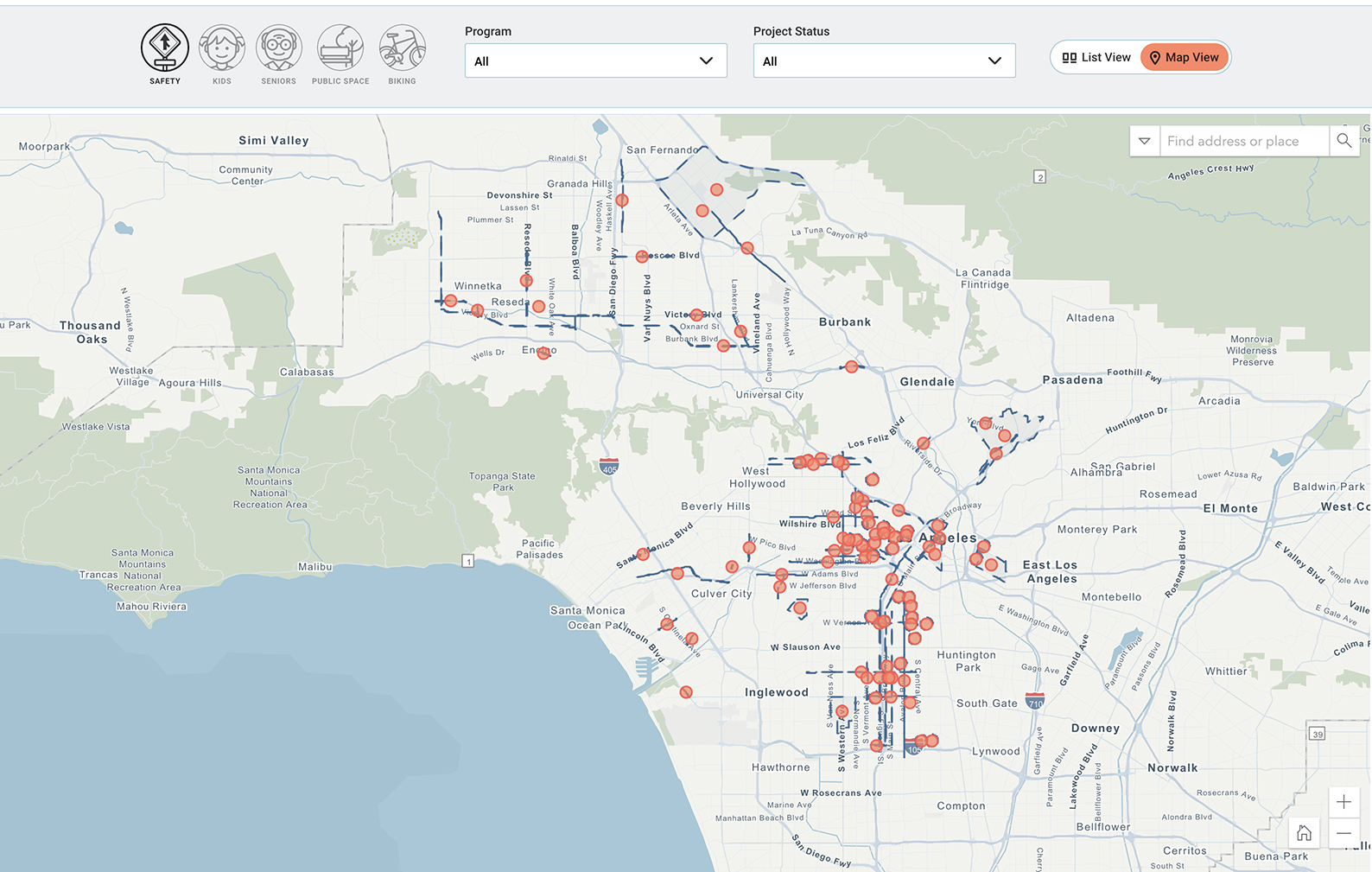Safety Programs
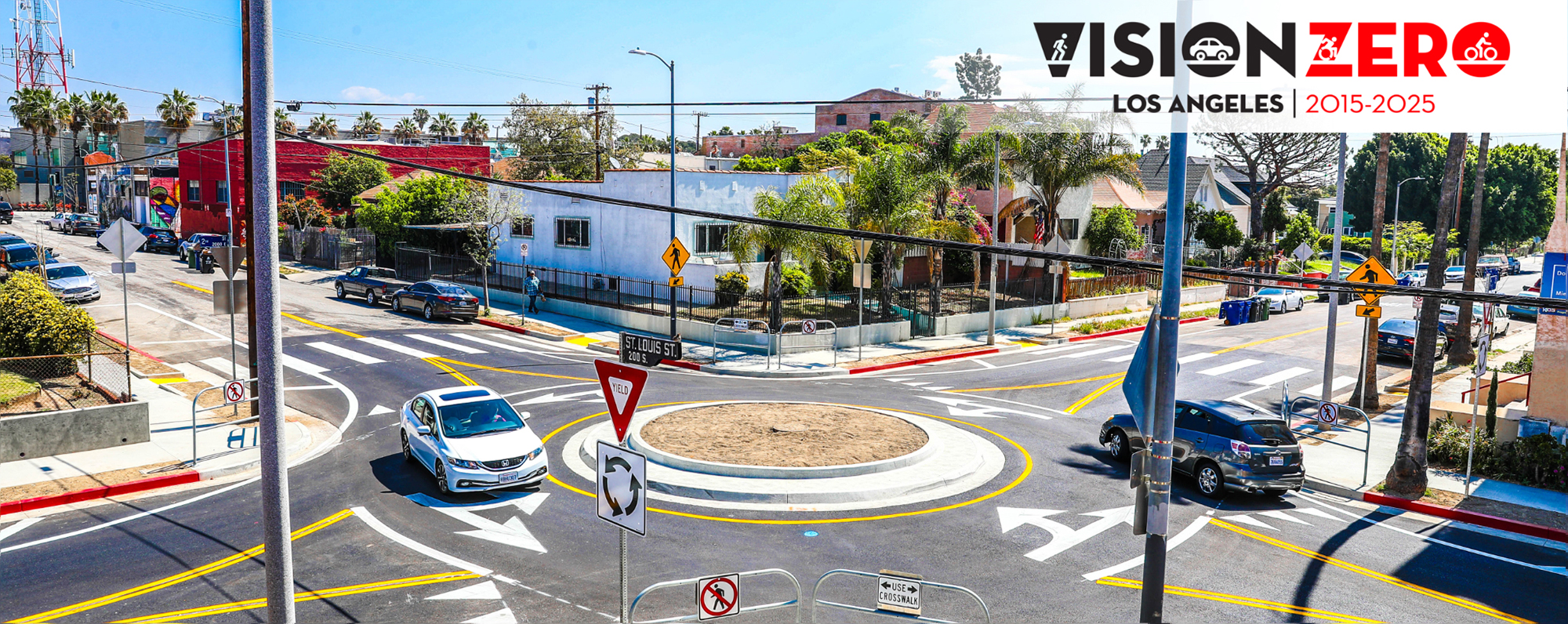
LADOT’s number one priority is to eliminate traffic deaths on city streets. We use data to understand crash patterns throughout the city. We work with communities to identify short and long term safety solutions to stop serious crashes from happening in the first place. Since 2017, LADOT has installed three thousand safer crosswalks, traffic signals, and intersection improvements.
Projects
View projects in your neighborhood
Remembering Loved Ones
LADOT wants to help you remember loved ones who have been lost to traffic crashes.
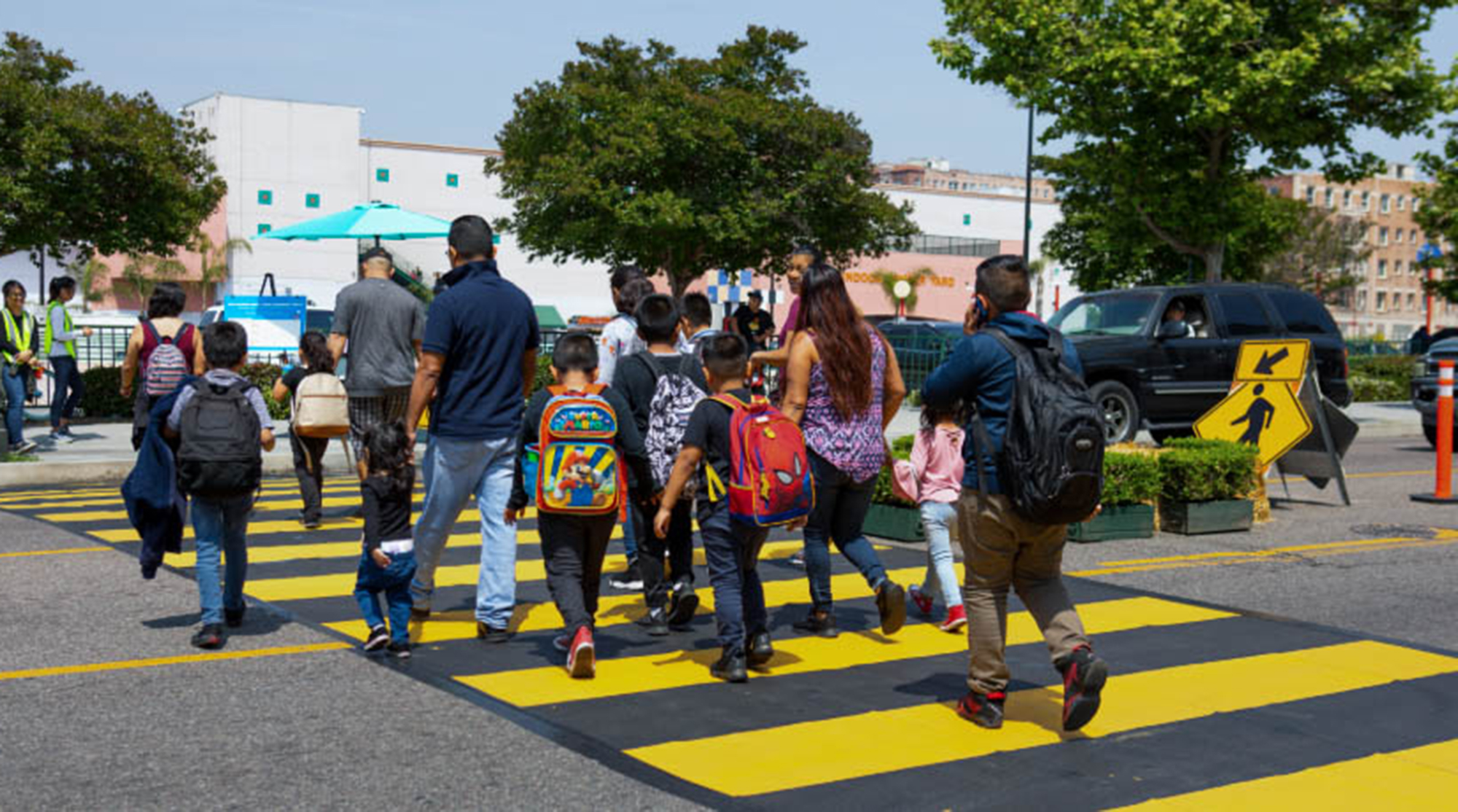
In partnership with LAUSD, LADOT’s Safe Routes to School (SRTS) program creates safe and comfortable routes to school. Recognizing that traffic crashes are the leading cause of death for children ages 2 to 14 in Los Angeles, SRTS is focused on eliminating all traffic crashes that involve kids. SRTS does this by installing safety improvements throughout the city, educating kids about traffic safety, and helping schools improve pick-up and dropoff locations. SRTS partners with community-based organizations, law enforcement, and other entities that are key to the successful implementation of SRTS Projects and Programs.
Each year, SRTS organizes the country’s largest Walk to School Day Program. Learn more about safe routes to school.
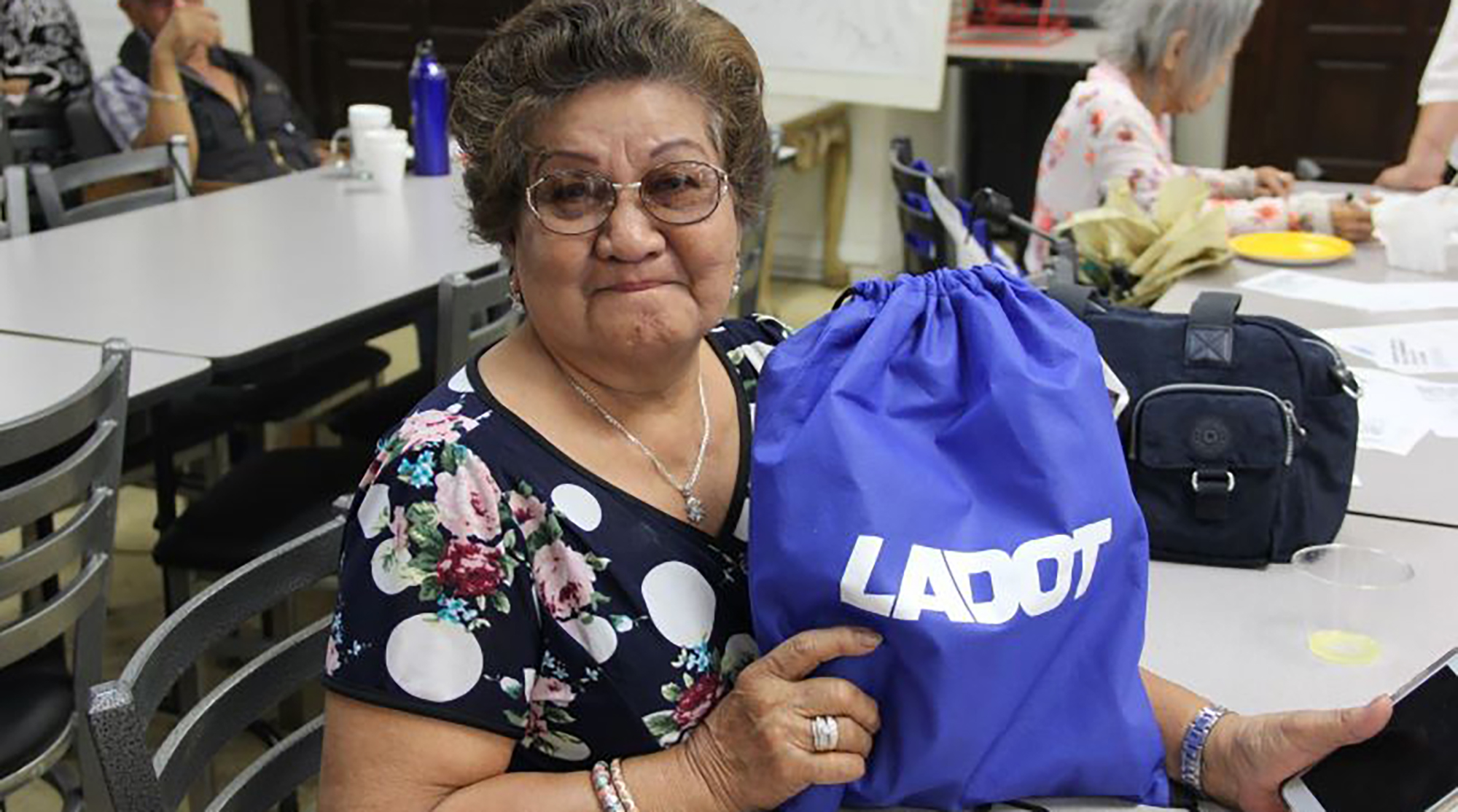
LADOT is committed to carefully considering the needs of older adults. Los Angeles’ older adult population is expected to grow dramatically in the coming years. There are about a half-million senior residents in Los Angeles — a number that is expected to increase by 50% over the next two decades. Our seniors deserve transportation choices that consider their needs and lifestyles. LADOT is working with senior centers and communities to:
- Create dedicated slow zones near designated senior facilities
- Prioritize safety enhancements where seniors need them most
- Long term: Identify better public transportation routes to destinations like jobs, recreation centers, health care centers, and amenities
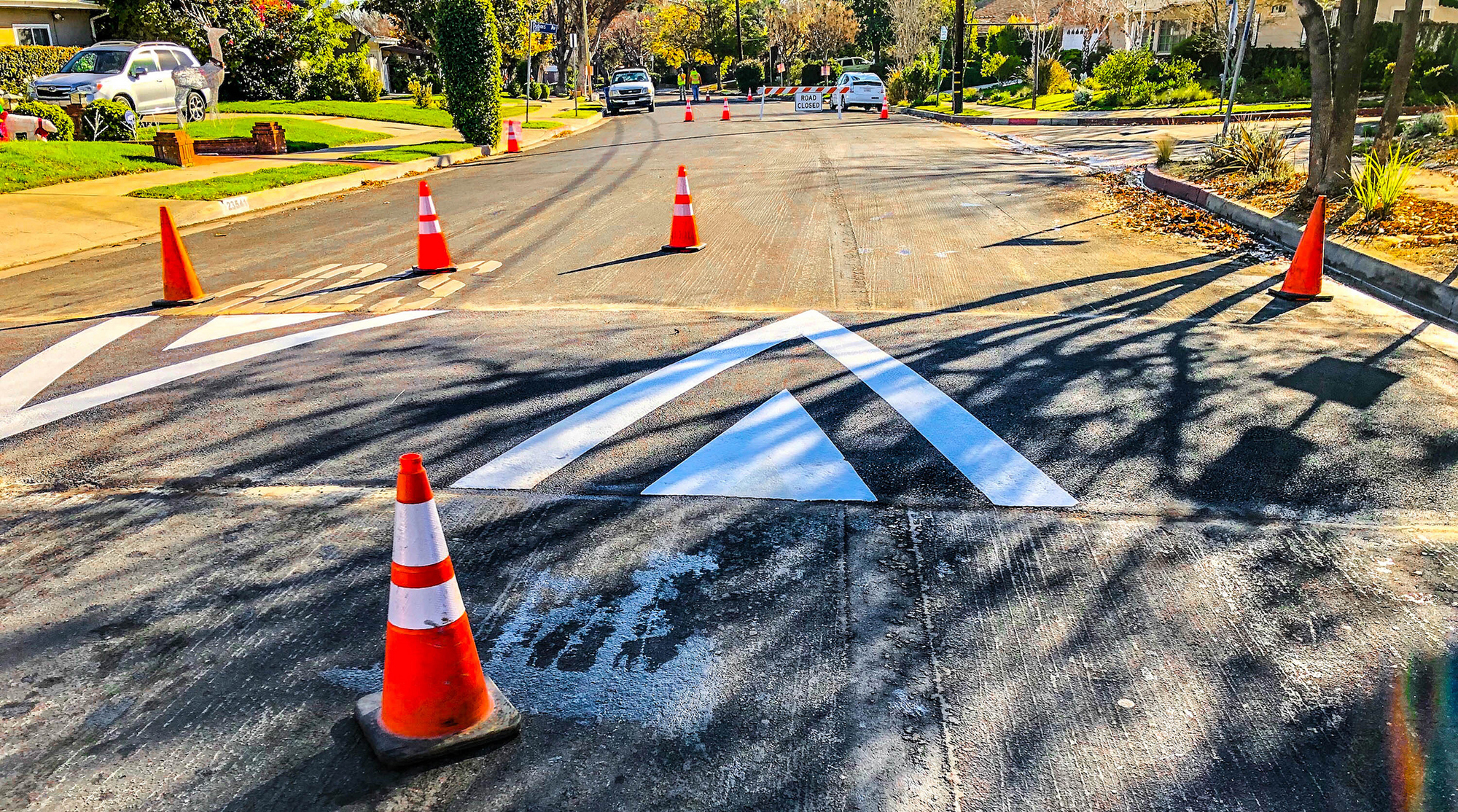
As adopted by Council in CF 24-0332, LADOT will develop a new methodology for prioritizing locations for the Residential Speed Hump Program. LADOT has produced the following report and will provide Council with a list of prioritized segments for their review and approval in the fall of 2025.
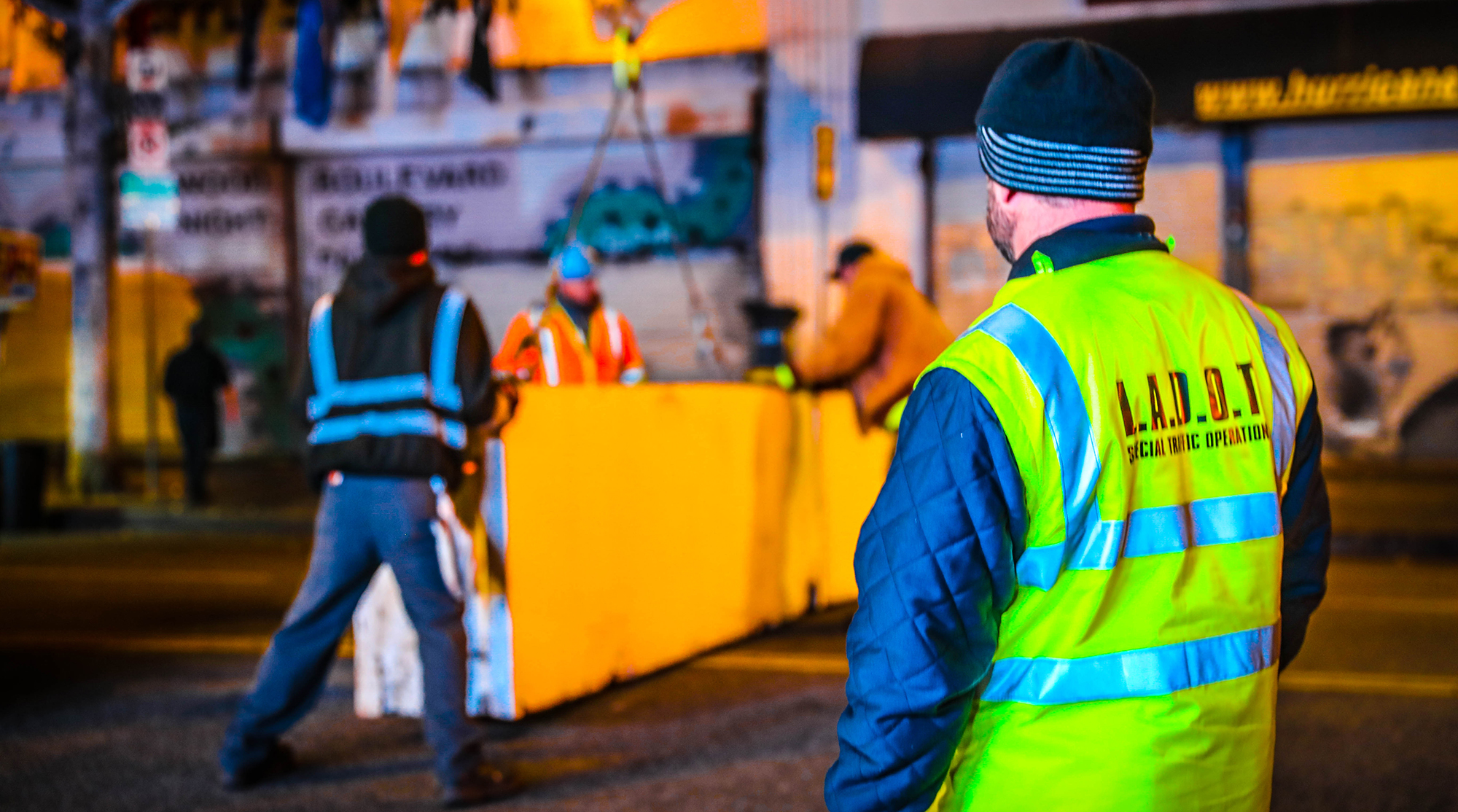
No one knows a neighborhood better than the people who live and work there. That’s why LADOT created a district operations division, where engineers work in your neighborhoods, alongside you.
Find your local district office below. To contact them about a problem, please submit an LADOT service request
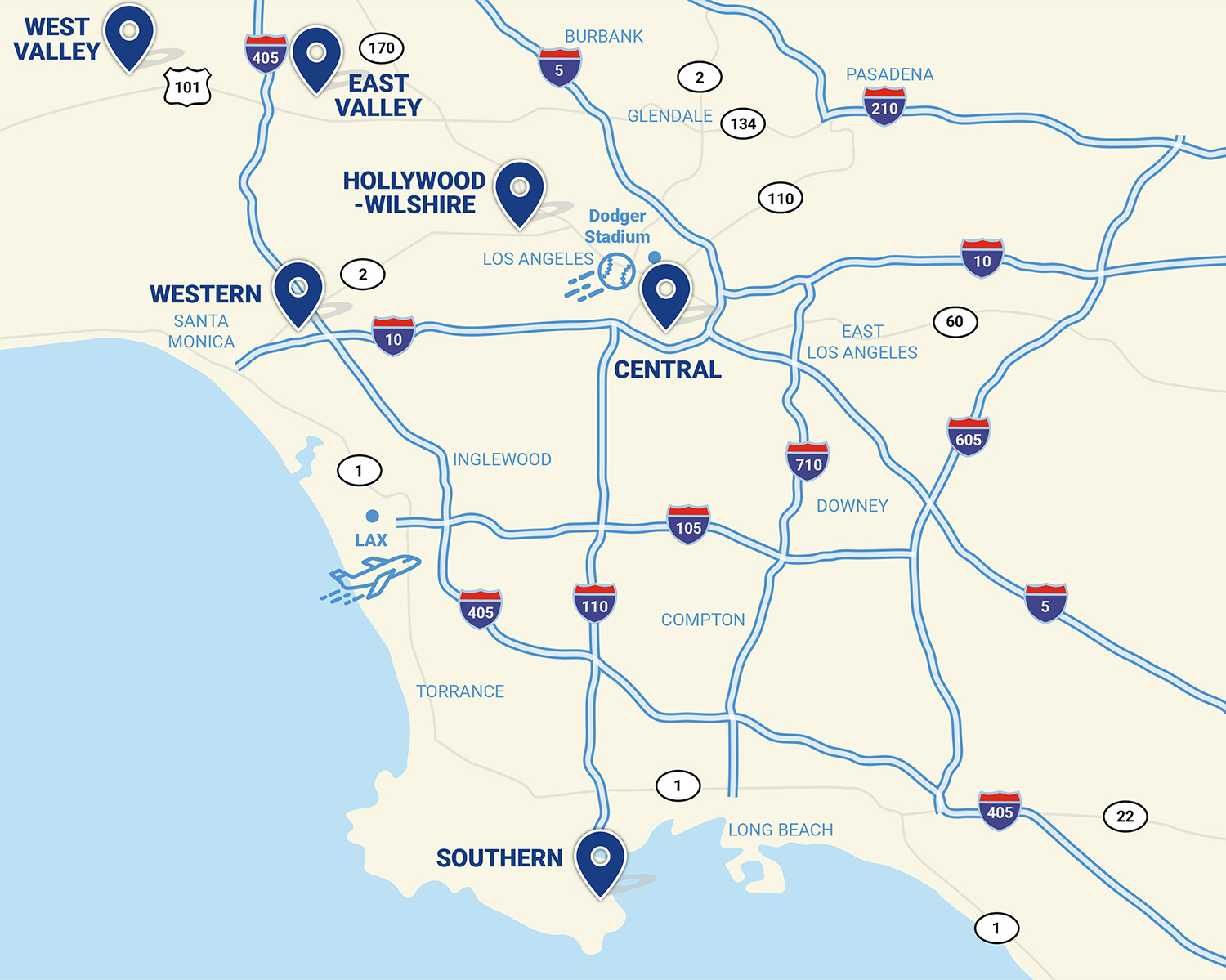
West ValleyServing Council Districts: 3,5,6,12 19040 Vanowen St.
| CentralServing Council Districts: 1,9,14 100 S. Main St. 9th Floor |
East ValleyServing Council Districts: 2,4,5,6,7 6262 Van Nuys Blvd. Room 320
| WesternServing Council Districts: 5,11 1828 Sawtelle Blvd. Room 108 |
Hollywood-WilshireServing Council Districts: 4,10,13 6501 Fountain Ave. | SouthernServing Council Districts: 8,15 638 S. Beacon St. Room 204 |
Not sure? Visit Neighborhood Info website
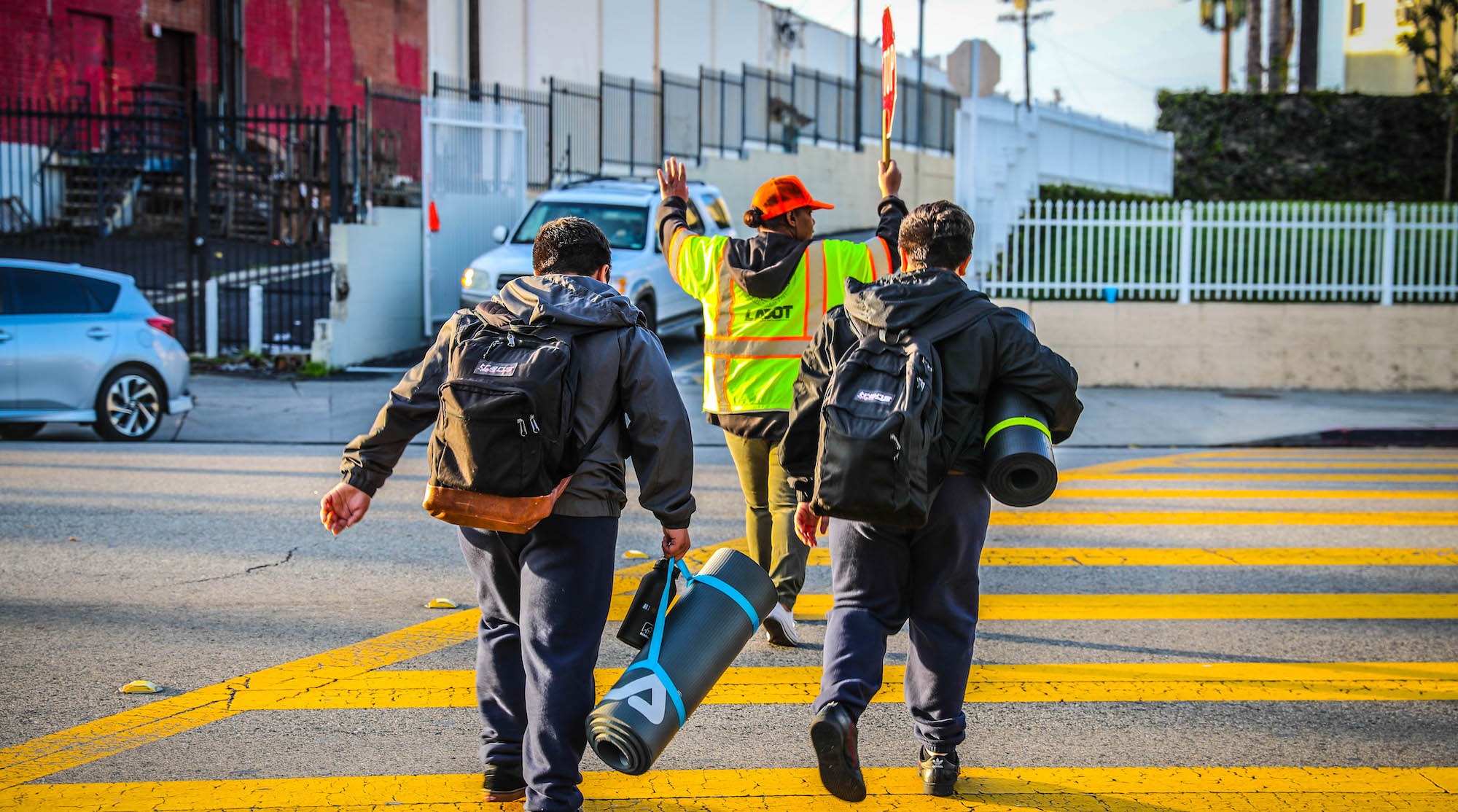
*** Due to loss of crossing guard capacity, a mandated hiring freeze, and the City’s fiscal constraints due to the COVID-19 pandemic, LADOT is not currently accepting requests for Crossing Guards. ***
The City’s Crossing Guard Program, jointly administered by LADOT’s District Engineers, Traffic Control and Safe Routes to School (SRTS), uses needs-based analysis to direct safety improvements to school zones. SRTS designs and implements safety plans for school neighborhood streets, and brings safety education into school communities to create a culture that prioritizes safety for all.
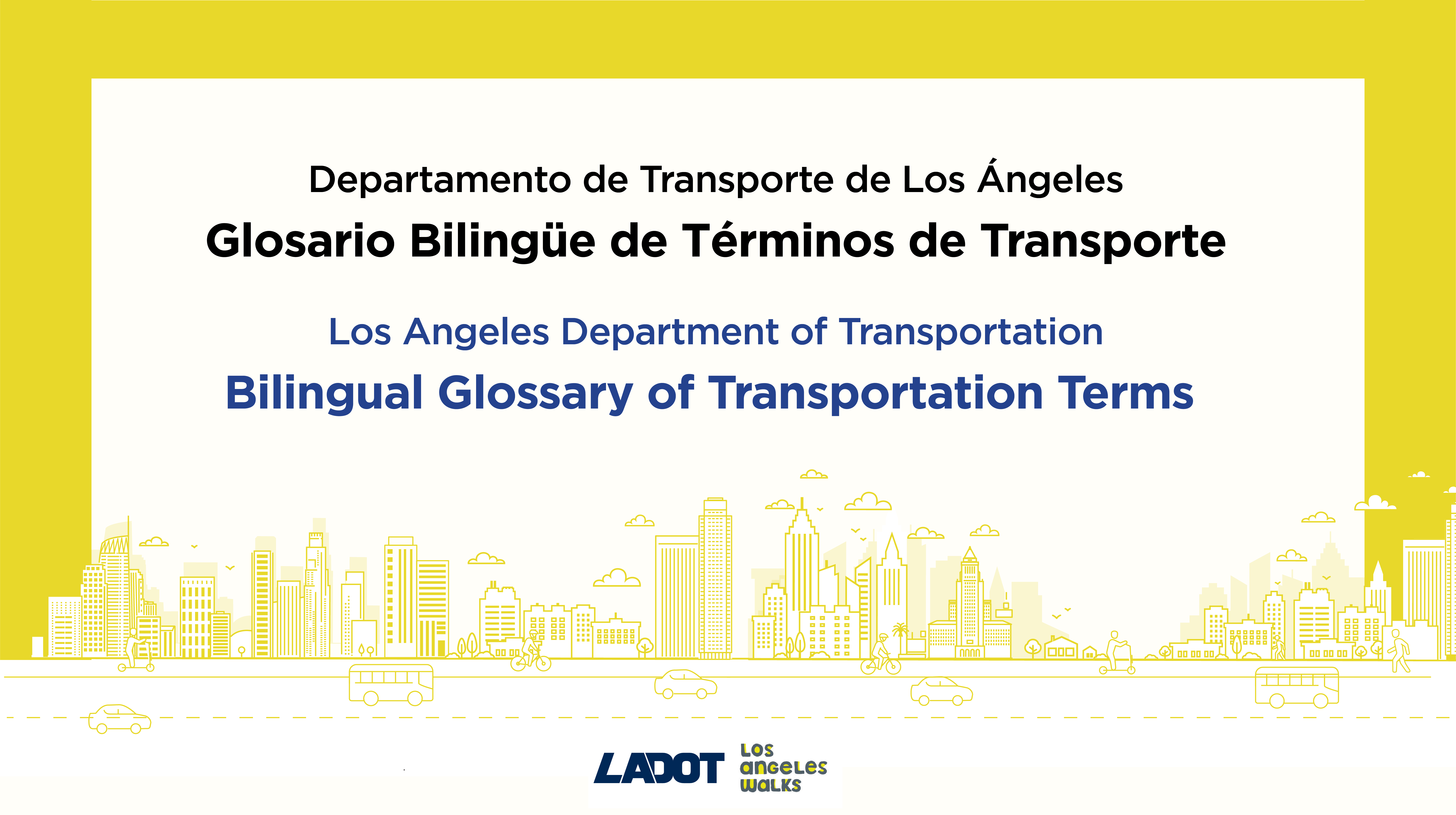
In the majority of Los Angeles communities, high quality and inclusive community engagement must be conducted in English and Spanish.
In 2020-2022, LADOT collaborated with LA Walks, community members, transportation and planning practitioners, advocates and others to develop LADOT’s first Spanish glossary. The project includes over 200 transportation planning and community engagement terms to improve and standardize LADOT’s Spanish language communication, as well as empower Spanish speaking communities to advocate for transportation improvements.


